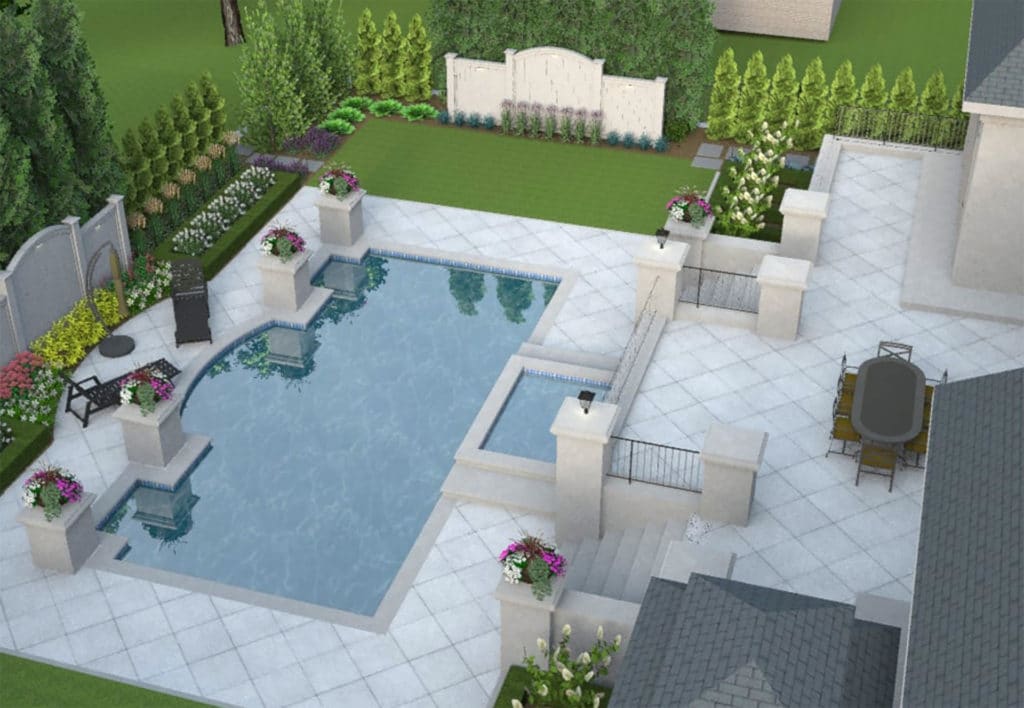The landscape design process is not something that happens over a few days. It takes weeks, months, and sometimes even years, depending on the size of the project and your level of involvement, from the initial landscape design phase to the final planting.
And between scheduling appointments, balancing all your current projects, making sure you’re incorporating your client’s wants and needs into their designs, preparing presentations, and closing deals — it can become a complicated process.
As the designer, it is up to you to ensure a seamless landscape design experience for you and your prospects. So, here are a few tips on how you can make sure everyone enjoys the perfect landscape design experience.
Qualify your prospects before you get started
The actual design phase of the landscape design experience can take a week or more, so the last thing you want to do is waste your time and resources with a prospect who isn’t really sure they even want to redesign their outdoor space.
To avoid this, you need to have an in-depth phone conversation with them before scheduling the initial appointment to view the space they are interested in redesigning. Measure whether they are serious about the project by using the goals, plans, challenges, and timeline (GPCT) framework.
Ask them what goals they have for space and if they already have any plans for how they want to achieve those goals. Then find out what challenges they are already aware of with achieving those goals and what kind of timeline they were looking at for their landscape design project.
Be prepared for your first face to face
You want to impress your potential clients from the very start but also simplify things for yourself a little. You should have gotten the location for the project from the prospect during your first conversation. Use that information to do a little upfront preparation.
Use Google Maps and Google Earth to look up their property online and get high-quality street and aerial views of the property. If you’ve invested in Google Earth Pro, you can utilize a variety of tools to calculate the measurements of different areas. You’ll also be able to print high-resolution images you can use for your presentation.
Check if the location is listed on any real estate sites like Zillow because they’ll often include photos of the exterior and the yard. There is also landscape design software that has a built-in geographic information system (GIS).
These tend to have much clearer images than you can find on Google and often include four-angled views of a property. With the terrain data it offers, you can get a good sense of elevations across the property as well.
Make use of tools and methods that save you time
People today are far more tech-savvy than they’ve ever been. And they expect the people fulfilling their wants and needs to be just as tech-savvy, if not more so. There was a time when a flat 2D rendering was more than enough to satisfy any customer. But the prevalence of CAD (computer-aided design) software has changed that.
Now, clients want to see concept designs from different views and angles — even experience them as a full 3D walk-through. You want to meet and exceed their expectations, so make sure that you have invested in a full-featured 3D landscape design software like Dynascape. The fact that landscape design software helps you impress your clients with rich 3D renderings is just one benefit, though.
It also helps you turn your ideas into final designs a lot quicker than you can with manually drawing them. And if the client changes their mind about any elements mid-design or once they’ve seen the design, all it takes is a few clicks and the revision is done! Landscape or garden design software saves you time, and that means you save money.

Collaborate at every point
Nothing can turn the landscape design experience into an absolute nightmare more than poor communication — whether this is from the clients’ side or the designers’. Some people may have certain desires, suggestions, or questions about their design but are too intimidated by their lack of knowledge of landscape design or horticulture to speak up.
So, it is up to the designer to encourage their feedback at every stage. Ask them questions about their vision. Prompt them to share any ideas they have, no matter how silly they may think it is. Ensure they feel comfortable asking you questions about any decisions you make and make sure you have the answers to those questions ready!
There are free landscape design apps and software available for anyone to use, and someone who is serious about their landscape design will very likely have tried out one or more of them before. You could even suggest one they can try during your first phone call. The more feedback you have from your prospect, the easier it is to create a landscape design that they will love!
Have fun
No one becomes a landscape designer because they want their job to be hard work. They are passionate about horticulture, love being outdoors, and find a unique pleasure in turning an outdoor space into a stunning piece of natural art.
So remember to be professional, but also make sure the landscape design process is a fun experience for both you and your customers. That will guarantee a seamless landscape design experience for everyone, no matter the challenges or obstacles you have to overcome as the project progresses.